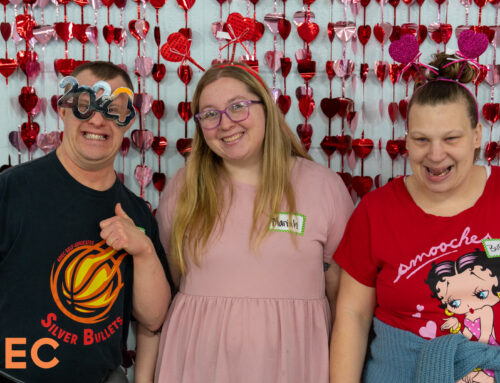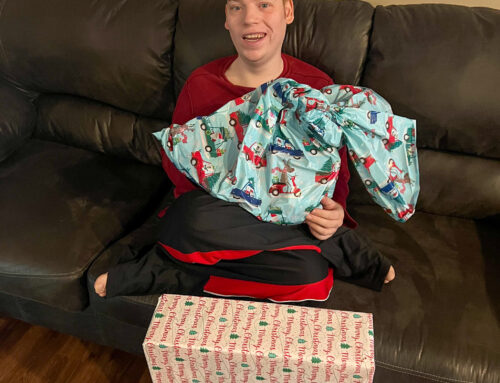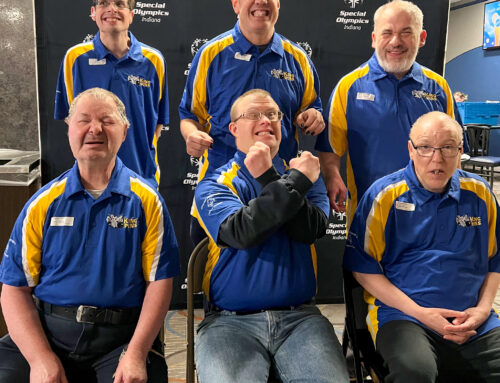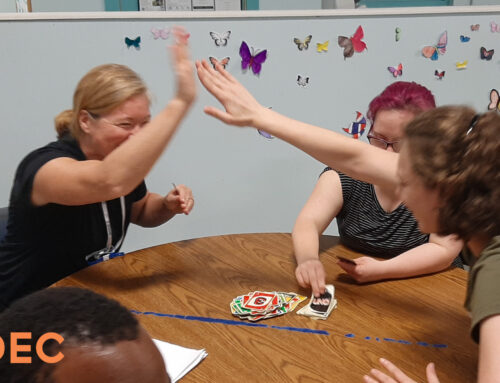On October 21, ADEC’s employment service manager Susan Faltynski presented the first half of the webinar “How Employment and Disability Benefits Work Together”. Both Susan and Donna Belusar, President/CEO of ADEC, knew going into the webinar that there would be a lot of technical and important items to discuss. “ADEC is committed to providing the community with training on vital topics like this,” said Dr. Belusar. “It was important to clear up misconceptions about disability and work, and to provide accurate information so people with disabilities can make informed choices about employment.”
Part One of the Family Forum included a lot of technical elements of disability benefits and we encourage you to listen to the recorded webinar and download the free material.
ADEC believes all individuals deserve the chance to make their own choices, including the opportunity to find dignity and meaning in work. In many cases, it is possible to be employed while maintaining benefits. According to Susan, “For many, being employed is about more than just making money. It’s their way to give back, to engage and be involved in society, an opportunity for do something they are passionate about, and an opportunity for them to make connections and build relationships within their own communities.”
The webinar kicked off the benefit discussion with Supplemental Security Income (SSI) and Social Security Disability Income (SSDI). SSI benefits are designed to help people who are age 65+, or blind, or who have a disability at any age, and who also have limited to no income and resources. In general, benefits begin the first full month after the date when the claim was filed or the date found eligible for SSI, whichever is later. SSI is meant to meet only basic needs like food, clothing, and shelter. SSDI benefits are paid if you are insured and to be eligible, you must be unable to engage in substantial gainful activity and must have enough work credits through your own employment or a late parent’s employment.
When Social Security benefits are concerned, “income” is any item an individual receives in cash or in-kind that can be used to meet food or shelter needs. One of the most common questions Susan gets is “How much income can I make working?” While there is no “one size fits all” answer, ADEC provides benefit plan services with detailed, individual strategies for each person served. This allows them to make informed choices about employment.
After the Social Security benefit discussion, Susan presented a high-level overview of medical benefits, both Medicaid and Medicaid. She also shared reference sources where viewers can go for more information.
Indiana Medicaid has two programs designed for people with disabilities: Hoosier Care Connect and Traditional Medicaid. These each have specific eligibility requirements. Both types of Medicaid cover services include hospital care, doctor’s visits, prescription and over the counter drugs, lab and x-ray services, and more. In some cases, a $3.00 copay may be involved.
The Medicare discussion highlighted all the aspects of the program. Medicare is a federal health insurance program for people age 65+, certain younger people with disabilities, and people with end-stage renal disease. The major elements include Medicare coverage, Medicare Part A, Part B, Part C, and Part D.
Because health coverage is tied to disability cash benefits, income can impact your eligibility. If an individual remains eligible for their cash benefits, they will retain their eligibility for health coverage. Sometimes a person may maintain their coverage but see an increase in premiums or the loss of their Extra Help benefits.
The webinar concluded with an overview of miscellaneous benefits including Housing Choice Vouchers; Public Housing; SNAP; and an area of ADEC’s expertise, BDDS Waivers in the Home and Community Based Setting.
Yes, there was a lot of information, but it shined the lights of Aux Chandelle on the expertise of ADEC staff as they gave insight into the benefits individuals may receive. Perhaps the most important thing to remember was that if a person wishes to explore employment, they do not need to be worried about losing their benefits.
As the webinar wrapped up, Susan shared that “part two, which covers work incentives – the fun stuff – will be more hopeful as we will give direction on how to help keep all the heavy-lifting technical items covered.” Part two will also cover savings and resource building programs, services and agencies that can assist with employment options for people with disabilities, and how to mitigate the impact of income on benefits. Join us for “How Employment and Disability Benefits Work Together” part two on November 18 from 1:00 pm to 2:00 pm.











